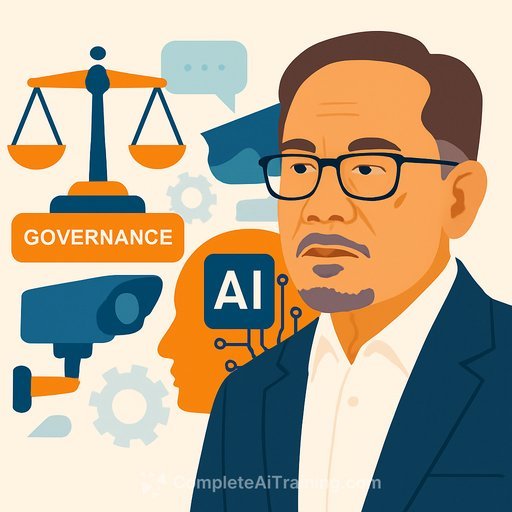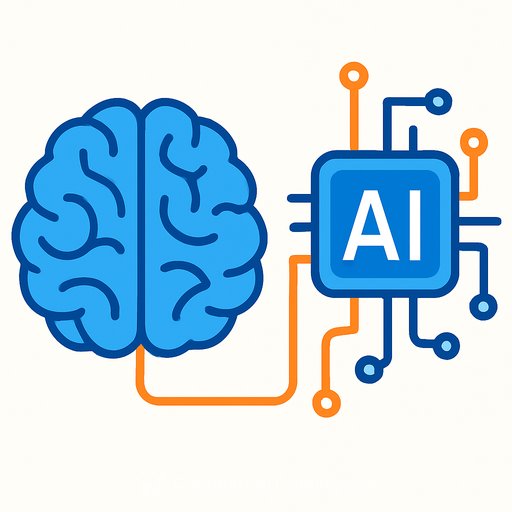AI Scientists Need a Positive Vision for AI
Let's be honest: the current AI cycle has plenty of mess. Low-quality content floods feeds. Deepfakes pollute civic discourse. Precision warfare gets more lethal. Workers labeling data are underpaid and invisible. Models scrape creative work without clear consent. Training runs drain energy. Big Tech tightens its grip. Funding shifts toward AI while other fields feel the squeeze.
That's real. It's also incomplete. AI doesn't have to make everything worse. Scientists and engineers can steer it toward the public good-if we decide to lead.
The Pessimism Trap in Research
Recent surveys show many AI experts predict net benefits from AI, while a broad cross-section of scientists express more concern than excitement by a wide margin. That split is understandable. It's also dangerous.
If the research community checks out, others with narrower incentives will define how AI shows up in labs, classrooms, hospitals, and public institutions. Opting out hands over the keys.
What a Positive Vision Looks Like
There are credible, concrete examples of AI serving the public interest. Translation tools are improving access across under-resourced languages, including marginalized sign languages and indigenous African languages. Policymakers are experimenting with AI-assisted deliberation to surface more voices, not fewer.
Large language models can scale respectful one-to-one conversations that correct climate misinformation. National labs are building foundation models to accelerate scientific discovery. In medicine and biology, machine learning has advanced protein-structure prediction and downstream drug discovery. Early, imperfect-yet promising.
Four Actions Every Scientist Can Take Now
- Reform how AI gets built. Develop and promote ethical norms. Prefer tools, datasets, licenses, and partners that meet those standards. Reward transparency and accountability in your collaborations.
- Block harmful uses. Document misuse, flag inappropriate deployments, and bring sunlight to quiet failures. Push back through peer review, program committees, and grant panels.
- Apply AI for public benefit. Use AI where it clearly improves health, safety, access, or scientific progress-especially for communities that are usually an afterthought.
- Renovate institutions. Update university policies, professional society guidelines, and democratic processes so they're ready for AI's risks and advantages.
A Practical Lab Playbook
- Ethics and risk review by default. For every AI project: define stakeholders, potential misuse, foreseeable harms, and mitigation. Run a pre-mortem before you write a line of code.
- Provenance and consent. Track dataset origins, licenses, and consent. Avoid gray-area scraping. Compensate data contributors and annotators fairly, with clear terms.
- Documentation that matters. Ship model cards and data cards with measurable limitations, evaluation contexts, and red-team results. Don't bury caveats.
- Energy and emissions reporting. Log training and inference energy, emissions estimates, and efficiency steps taken. Prefer smaller models when they meet requirements.
- Security and misuse testing. Threat-model dual-use risks. Red-team against disallowed content, fraud, bio/chem risks, and privacy leaks. Gate dangerous capabilities.
- Incident transparency. Publish near misses and failures. Contribute cases to public trackers like the AI Incident Database.
- Community co-design. Involve end users early-especially underrepresented groups. Validate that your success metrics reflect their goals.
- Open science with care. Release code, data, and checkpoints when risks are low and benefits are clear. Use responsible disclosure when they're not.
- Procurement and vendor standards. Require security, privacy, auditability, and redress in contracts for third-party AI tools used in your department.
- Education policy. Set clear norms for student and staff use of AI. Teach critique, verification, and citation, not copy-paste shortcuts.
- Funding independence. Diversify support so your agenda isn't captured by a single corporate partner. Disclose conflicts early and often.
Guardrails for Harmful Uses
Some deployments shouldn't ship. Biased predictive policing, invasive proctoring, opaque hiring filters, synthetic nudges that distort elections-these fail basic scientific and civic standards.
- Refuse to build or endorse systems with weak consent, poor auditability, or unfixable bias.
- Use peer review and program committees to set a higher bar for safety and transparency.
- Advocate for risk management frameworks in your lab and department. The NIST AI RMF is a solid starting point.
Measure Public-Good Impact
If it matters, measure it. Move beyond glossy demos.
- Access: more languages served, latency and cost reduced for underserved users.
- Integrity: decrease in misinformation spread or harmful outputs under stress tests.
- Civic input: number and diversity of constituents meaningfully engaged.
- Science: time-to-result and reproducibility gains, not just benchmark wins.
- Environment: energy per inference and total emissions trending down.
- Labor: fair pay, safe conditions, and consent for data and labeling work.
Where Policy Meets Practice
Institutional change is overdue. Universities need clear guidelines for AI-assisted research and teaching, audited use of third-party tools, and support for secure compute. Professional societies should update codes of conduct and review criteria to reflect real-world risk.
Democratic institutions need channels for public input aided by AI, not crowded out by it. Build systems that summarize diverse views faithfully, make tradeoffs explicit, and preserve human accountability.
Act Like the Future Depends on Your Roadmap
We are close to the technology. That proximity is a responsibility. Technology, as Melvin Kranzberg put it, "is neither good nor bad; nor is it neutral." Outcomes depend on our choices, incentives, and standards.
Create the version of AI you would trust your field, your students, and your community to rely on. Document it. Share it. Teach it. Then help your institution raise the bar so good practice becomes normal practice.
Next Steps
- Adopt a lightweight AI risk review for every project in your lab this quarter.
- Publish model cards and energy reports with your next paper or release.
- Pilot an AI-assisted public engagement workflow with your department or local government partner.
- Set vendor requirements based on safety, privacy, and auditability before renewing AI tool contracts.
If you're formalizing team skills, explore curated training by role at Complete AI Training.
Your membership also unlocks:






